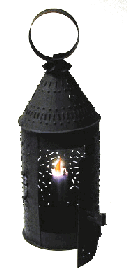HOME | home
Iron on the Hearth | Iron, Cast and Forged | Cast Iron Cooking 4 | Copperware | Copper and Brassware 2 | Brass Alcohol Stove | Pipe Smoking | Tobacco the Indian Weed | Women's Pipes | Clay Pipe Collection | Pipes2 | pipes3 | Pipes4 | Pipe Tampers | Early Lighting 1 | Early Lighting 2 | Early Lighting 3 | Early Lighting 4 | Early Lighting 5 | Early Lighting 6 | My Lamps | Center Draft Lamps | Center Draft Lamps II | Center Drafts III | Miners lamps | Matches and Match Safes
Early Lighting 2
in America
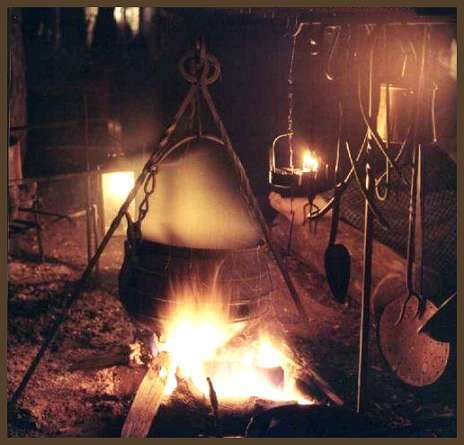
Items in the Collection of Beth Maxwell Boyle

Betty Lamps & Grease Lamps
by Beth Maxwell Boyle
Various forms of the Betty Lamps were designed and used in the18th and 19th Centuries.. The most popular were made of metal, had rounded sides, and a shallow reservoir with the spout at one end. At the end of the spout the wick was placed so it could stick up just enough to be set alight. Most were covered with a hinged lid. A hook of iron that resembled a miniature, hearth tool was attached to the lamp which could be stuck into a rafter, hooked on a peg, or a over the rung of a ladder back chair. An iron pickwick, for retrieving the wick in case it dropped into the oil was frequently attached to the lamp with a chain as well. These lamps burned many types of oil and were extremely handy for household illumination. In isolated rural areas Betty lamps were used until the mid to latter part of the 19th Century in both America and Europe.
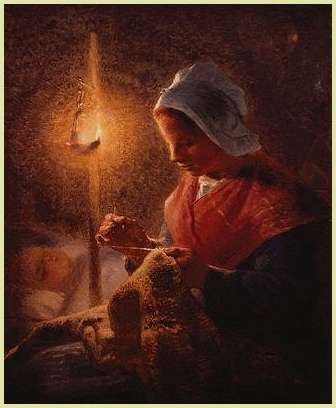

The simple iron betty Lamp produced comparatively good light for its time. The light varied with the size and material of the wick. Animal oils or grease were commonly used as fuel in these lamps. Fish oil gave the poorest light and was very smoky. Animal fats were somewhat better but still burned with an odor. Whale oil was much sought after as it produced the best light, It usually was available in coastal towns but not always in rural areas. Whale oil gives off light about equal to that of two ordinary candles. This fuel was always expensive and highly sought after. Betty lamps smoke if the wick is not adjusted to the fuel being burned. Although an improvement over other spout lamps, Betty lamps were still rather messy to deal with. This type of lamp was most often used by farmers and tradesmen not in the quarters of the wealthy. Even though the Betty was a common lamp type there were still opened grease lamps being made at the same time. These lamps called Crusies were as common as Betty lamps and also continued to be made well into the 19th Century. Some people mistakenly think the Betty completely replaced other lamp forms. This is not the case. Often blacksmiths made cheap lamps for the average household and these lamps were known to be used in the slave quarters on Southern plantations as well as on farmsteads all over early America.

Sheep Tallow was often used as fuel
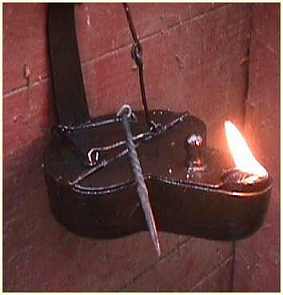
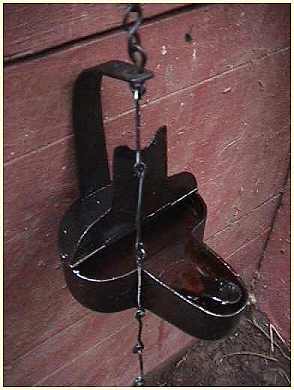
Antique Betty Lamp in the Boyle Collection.
The Betty, from the German word “besser,” meaning better, was designed to improve the performance of grease lamps by creating a wick holder in the base of the lamp. This improved lamp design allowed the drippings from the wick to run back into the bowl and thus be consumed. A cover was added to the lamp which further improved it by confining heat, decreasing smoke, and making the oil burn more efficiently.
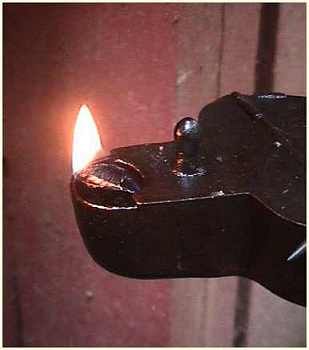
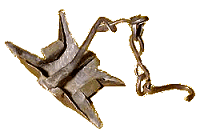
This crude iron grease lamp
accommodated four wicks.
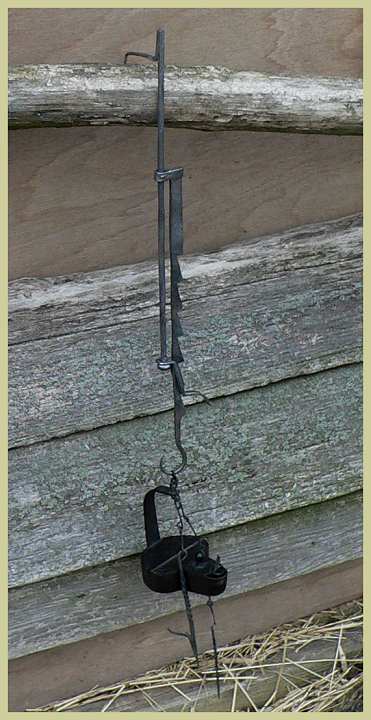
Historically accurate trammel reproduction by Kim Thomas
No part of this website may be used for any purpose ( including using images )
without written consent from The Rams Horn


